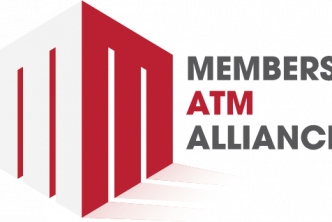By Nikole John
Analytics Performance Analyst, AdvantEdge Analytics
CUNA Mutual Group
Before a credit union can prudently determine how much support it can offer members during these challenging times, leaders must first step back and take the time to establish an adjusted risk tolerance. I’ll pause here for laughter, as we all know the rapid-fire changes to daily life brought on by the pandemic hardly allowed for the kind of thoughtful deliberations we’d have liked. Rather, the unprecedented circumstances that literally sprung up overnight, in many cases, called for bold, swift and decisive action.
Now, however, as more of the COVID-19 impact and various government models for support have come into view, credit unions can allocate more time to strategic thinking around their plans for community support. With both snapshot and trending data, as well as qualitative insights from members and employees, leaders have more of the intelligence they need to establish an adjusted risk tolerance.
Creating a Net Worth Buffer
Every financial cooperative has a good understanding of the losses it is willing to withstand in normal circumstances, but today is nowhere near normal. Still, an established risk tolerance can serve as a good baseline. That’s because it was likely built by the same values-centric leaders who are working out a new plan for today’s members in need.
Filene called out a critical data point in an April 2020 article for credit union executives calculating how large of a pot to designate for pandemic support. Net worth, or more specifically, a net worth buffer, is perhaps the single most important factor to determining what a credit union can do to help members. Credit union leaders making tough decisions around financial relief programs can take solace in a minimum net worth target, as it clears up a lot of ambiguity:
Let’s say you are currently sitting on 11% net worth, and determine that in the direst of economic conditions, you never want to fall below 8%. Therefore, you have a 3% buffer… you would need to incur operating losses equal to 3.00% ROA before falling to 8% … Now you have a hard number to work with… you might decide you want to set aside 20% of your net worth buffer into an emergency fund to immediately help members.
For some credit unions, creating a net worth buffer may go against certain parameters in their asset liability management (ALM) policy. Assembling the asset liability committee (ALCO) to discuss (or even better, agree to) new metrics may be a worthwhile effort. Securing the buy-in of these leaders should provide enough endorsement for the board of directors to feel confident in supporting an adjusted risk tolerance.
Filene also provided a tremendously helpful resource for credit unions looking to create meaningful, yet sound, programs for struggling members. The downloadable worksheet allows leaders to crunch their own numbers to determine how much funding to allow such a program.
Making Prudent Exceptions
Of course, establishing an adjusted risk tolerance is not nearly as simple as the math might suggest. There are heartstring-pulling realities in your communities that will try your employees’ fortitude and test the boundaries of your policies and procedures. Making prudent exceptions is part of what makes a credit union special and such a valuable resource in turbulent times, so they shouldn’t be entirely discouraged. And, consider this: An adjusted risk tolerance will actually make it much easier to allow for exceptions. With proper parameters in place, decision-makers can more easily hold the anticipated consequences of an exception against an endorsed plan.
To better prepare for the kind of support members may request in the coming weeks and months, credit unions can run a series of analyses on different segments of the membership. If, for instance, it’s particularly important to the cooperative’s leadership that they help recently furloughed or unemployed members, a simple look at income can provide a good starting point.
Lining up the difference in member income today vs. 30 days ago with the credit union’s net worth buffer shows how well- or not well-positioned the credit union is to support that particular segment. Depending on how closely the help members may need lines up with the help the credit union is able to provide, further segmentation may be in order. The credit union could then consider developing a tiered set of assistance programs offered to members based on things like their tenure or level of engagement.
Determining the Best Way Forward
While a great number of decision-makers within the movement had to jump into response mode without the support of emergency fund calculations, chances are their tough calls were not wrong calls. Many credit unions were financially strong going into the current crisis. As Filene points out, credit unions were sitting on nearly 11.5% net worth at the beginning of 2020. This kind of financial strength provides quite a bit of wiggle room for the average cooperative. That does not mean, however, leaders have to continue flying blind, nor flying alone. Credit union executives should consider forming a cross-functional tactical team to help establish the new risk tolerance. That way, compassion and calculation can work hand-in-hand to determine the best way forward.
If you need help using analytics to establish an adjusted risk tolerance, drop us a line.






